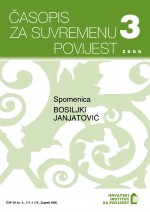Author(s): Vladimir Geiger / Language(s): Croatian
Issue: 3/2006
On the basis of literature and archival sources, this article discusses the largest camps for volksdeutch on the territory of Croatian after the Second World War, from May 1945 to the beginning of 1947 (Josipovac by Osijek, Valpovo, Velika Pisanica by Bjelovar, Krndija by Đakovo, Šipovac by Našice, Pusta Podunavlje in Baranja and Tenja/Tenjska Mitnica by Osijek). The camp inmates, largely older individuals, women and children, were used as labour pool for work outside the camps, mainly in agriculture. The conditions of life in the camp, especially in terms of hygene and food, were more than sparce and inadequate. According to all evidence, the majority of deaths occurred due to illness, especially typhus, exhaustion, cold or hunger. Liquidations were not massive or frequent, but abuse and killings did occur. Research to date has shown that no less than between 10,000 to 18,000 of the 20,000 volksdeutsch that remained in the homeland were interned in camps during the course of 1945, and at least a few thousand lost their lives. In the historiography, publications, memoirs, reports/eyewitness accounts of the camp inmates as well as the camp administrators and contemporaries, and documents, there is a variety of claims, allegations, estimations and lists of names referring to the number and structure of the inmates and the number and structure of the victims of the camps for the volksdeutsch in Croatia. This amount of literature and documentation concerning the camps for the volksdeutsch in Croatia enables a basic overview to be made.
More...


